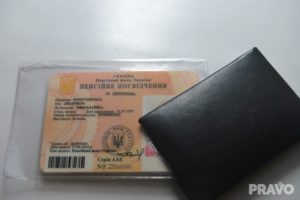


Unfair Competition. AMCU Keeps an Eye on Pharma
- 22.05.2019 13:12

Pharmaceutical markets have traditionally been on the radar of the Antimonopoly Committee of Ukraine (AMCU). In recent years the AMCU has completed a few high-profile investigations on alleged concerted actions against such pharmaceutical companies as Alcon, Servier, Sanofi-Aventis, Roche, Bayer. Both business and legal experts scrutinized and widely discussed the relevant decisions of the AMCU and courts.
In addition, the AMCU investigated a number of cases related to unfair competition on pharmaceutical markets. Historically unfair competition investigations form a significant part of all types of investigations conducted by the AMCU. For example, in 2018 the AMCU completed 168 unfair competition investigations, including ones on pharmaceutical markets. Those mainly related to dissemination of misleading information or illegal use of trademarks and packaging designs.
Although the majority of unfair competition cases relate to dissemination of misleading information, it appears that pharmaceutical companies tend to be more careful about advertising their products. Consequently, it seems that the number of cases on dissemination of “pure” misleading information by pharmaceutical companies (e.g., declaring inaccurate treatment effect, uniqueness of active substance, safety for children while there are certain age restrictions etc.) has fallen in the last few years.
However, it is not rare for companies to use the trademarks and packaging designs of others, i.e. their business reputation, to promote their own medicines. Below we provide a brief overview of the AMCU’s approaches to consideration of unfair competition cases related to such infringements.
Normally, market players pay a lot attention to their products’ packaging designs and invest significant funds to make their brands recognizable and popular among consumers. In particular, to ensure a brand’s distinctive nature it is necessary to prevent competing products with confusingly similar packaging designs from entering the market. It goes without saying that some elements of medicines’ packaging design are usually protected as intellectual property objects and their holders may seek legal protection in courts. Still, as practice shows, unfair competitors may reproduce others’ packaging designs to the extent of confusion in such a sophisticated way that they do not directly infringe the intellectual property rights of holders. Therefore, sometimes holders do not have well-substantiated legal grounds for initiating court proceedings against unfair competitors. In such cases, the AMCU seems to be the most effective remedy to fight against them. Also, the AMCU may initiate investigation even if an unfair competitor has already registered some separate elements of its packaging design as intellectual property objects.
Based on our practice, market players treat the AMCU as effective and sometimes the only available remedy to protect their rights against unfair competitors. Due to its efficient work we note that companies tend to bring more claims to the AMCU on illegal use of their packaging designs on various markets and the pharmaceuticals is not an exception.
Basic pre-conditions for submitting claim to AMCU
In case a company is aware that an act of unfair competition has been committed and decides to protect its rights in the AMCU, it is important to check whether the basic criteria for submitting a claim are met.
Potential claimants should first bear in mind that they may file claims within 6 months from the date they became aware or should have been aware of infringement of their rights. If the 6-month term has expired, the AMCU shall refuse a claim (unless it finds a deadline omission reasonably substantiated).
If the submission term has not expired, the next reasonable step is to double check that a potential claimant and a respondent are competitors, i.e. acting on the same market. Market definition is one of the fundamental issues in any antitrust investigations, specifically on pharmaceutical markets. As of today, there are no legislative rules on market definition in antitrust investigations on pharmaceutical markets. Still, on 21 February 2019 the AMCU adopted the Recommendation clarifications on the application of laws on protection of economic competition by participants of pharmaceutical markets in vertical agreements as to supply and promotion of medicines (the “Recommendations”) where, among other issues, the AMCU touched upon approaches to market definition. Pursuant to the Recommendations, the AMCU is likely to follow ATC 3 market definition in unfair competition investigations provided that the prescribed medicine is not concerned. Based on practice to date, in unfair competition investigations (unlike investigations on alleged concerted actions) the AMCU is basically fine with definition of a market based on ATC 3.
Collecting evidence to support a claim
To ensure successful consideration of claims, claimants should do their homework prior to submission, i.e. collect due evidence supporting their arguments.
Given that claimants should have been the first to start using their packaging design in commercial activity (i.e. have started sales of respective products), they need to provide the AMCU with evidence on that. It should be underlined that for unfair competition cases claimants are required to prove that they were the first to start using the packaging design in a commercial activity rather than they were the first to have merely registered certain signs as intellectual property objects. Usually, sales/supply agreements as well as receipts shall suffice for these purposes.
Along with the evidence of being the first to have started using the packaging design, claimants should provide the AMCU with proper arguments that consumers associate respective medicine (sold in the “disputed” packaging design) with their brands. To this end, data on expenses spent for advertising, sales volumes and awards received by such medicine may be quite helpful.
One of the most important tasks here is to prove that the unfair competitor does use a packaging design being confusingly similar to the claimant’s one. As a rule, claimants should present an expert opinion and/or results of consumers’ survey confirming such confusing similarity. Any complaints received from consumers on that matter may serve as an extra argument for the AMCU.
Finally, claimants shall substantiate that their rights have been infringed as a result of unfair competitors’ actions, i.e. use of confusingly similar packaging designs. Unfair competitors usually sell their medicines at prices much lower than the medicines sold in the “original package”. Furthermore, the medicines sold by unfair competitors might be of worse quality in comparison to the ones sold in the “original package”. Therefore, acts of unfair competitors may result in financial losses and reputational damage for claimants. Relevant documents on financial losses and/or harm to business reputation would constitute additional evidence in favour of claimants.
Investigation procedure and possible outcome
The AMCU shall consider a claim within 30 days and then decide whether to commence investigation or to leave a claim without action. If needed, this term may be extended by an additional 60 days. Please note that to date there has been no clear legislative deadline set for unfair competition investigations (a draft law providing for the 1-year deadline for unfair competition investigations was adopted in February 2019). In practice, unfair competition investigations usually last up to a year. The term of consideration mostly depends on the nature of legal arguments and supporting evidence presented by a claimant.
As a result of investigation, the AMCU can prohibit using a confusingly similar packaging design and impose a rather harsh fine on an unfair competitor. According to the AMCU’s Recommendations on Calculation of Fines, such fine may amount to 10% of a respondent’s income (revenue) from sales of products in violation of competition laws.
It should also be noted that parties can reach a settlement in the course of an investigation. Based on our practice, respondents may be willing to cease infringement voluntarily to prevent negative consequences such as: payment of fines and harm to business reputation (as all decisions adopted by the AMCU are publicly available).
Overview of the recent practice
In 2018 there were several investigations regarding illegal use of packaging designs on pharmaceutical markets. We would like to say a few words about the “White Coal” case as it seems to be one of the most illustrative.
The case dealt with medicine and dietary supplements which were both sold in confusingly similar packaging designs. The sales of medicines had started much earlier before the dietary supplement entered the market. In particular, we would like to point out the following aspects of the case:
— The AMCU took a flexible approach and concluded that the medicines and dietary supplements can be treated substitutable due to the similar therapeutic effect. Thus, the claimant and the respondent were regarded as competitors.
— The AMCU adopted the preliminary decision. In other words, the AMCU prohibited the respondent from selling the dietary supplement despite the fact that the investigation was in process. To the best of our knowledge, that was the first preliminary decision ever taken by the AMCU in analogous cases.
The AMCU declared that there was an act of unfair competition and imposed a fine of approximately EUR 3,000.
As to the largest fine imposed by the AMCU in 2018 for illegal use of trademarks and packaging designs, please note that this sum came to approximately EUR 300,000.
Closing remarks
Undertakings should bear in mind that they may protect their rights to packaging design against unfair competitors even if: (i) unfair competitors do not directly infringe intellectual property rights and (ii) unfair competitors have registered certain elements of their packaging designs as intellectual property objects. Based on recent practice, the AMCU has shown itself to be an effective remedy for fighting with unfair competitors. Still, to achieve the desired goals, claimants need to do their homework as well as to be ready to react efficiently on additional requests by the authority in the course of an investigation.
Yevgen Blok is a senior associate at Aequo
Denys Medvediev is an associate at Aequo






СВІЖИЙ ВИПУСК
ВИДАННЯ
© Юридична практика, 1997-2024. Всі права захищені


 Видавництво
Видавництво 








